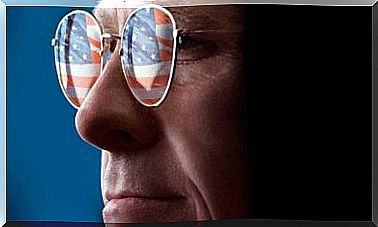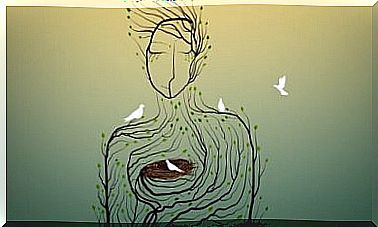The Inability To Recognize Faces (Prosopagnosia)

In 1947, Dr. Bodamer coined the term ” prosopagnosia ” or “face blindness” after discovering two clinical cases with this disorder. He defined this alteration as “the selective interruption of the perception of faces, both one’s own and that of others, those that can be seen but not recognized as those that are typical of a certain person.”
Oliver Sacks, a famous English neurologist, suffers from this rare perception disorder. He says that when he goes out in the morning he recognizes his neighbors by the dogs they carry. In the same way, he says he recognizes his lifelong doctor by his voice. When asked if it is overwhelming not being able to recognize people, Sacks humorously expresses that “sometimes it is even a relief.”
Prosopagnosia is a type of visual agnosia that disables the person suffering from it to recognize faces or faces of familiar people. And you will ask yourself: and what is an agnosia? The word agnosia derives from the Greek and means absence of knowledge.
Visual agnosias, as the name suggests, are specific agnosias for visual stimuli. The person does not have any visual or sensory deficiencies, the eyes are healthy and work perfectly. They can see visual stimuli just as a normal person sees them. Their problem is that they don’t have the ability to recognize them, they don’t know what they are.
In the case of prosopagnosia, patients are able to see a face as such and say that the object in front of their eyes is a face, but they are not able to say to whom it belongs. They are able to see all facial features separately but these features never merge or integrate as a whole. Your brain is not able to process the information sent by your eyes, it is as if there is a disconnection. In the most serious cases, the patient does not recognize himself.
People who suffer from prosopagnosia take advantage of the fact that they can see easily the easy features separately to deduce who it belongs to. A large beard, a scar, a mole, a hairstyle … are traits that can guide you in the process of recognizing that person. Also the voice, movement, smell or the way of dressing are clues that the patient with prosopagnosia uses to facilitate recognition.
What causes this strange disorder?
Prosopagnosia results from damage ( stroke, head injury, tumor, or infection ) to the ventral stream in the border area between the occipital and temporal lobes of the brain. This area of the cortex has come to be known as the fusiform area of the face.
There are also cases of congenital prosopagnosia, that is, the patient was born with this alteration. In these cases, patients do not know that they are sick since, having been born with the disorder, it is normal for them not to recognize a face as a whole piece.
Finally, some interesting facts about this disorder:
– Actor Brad Pitt suffers from this strange pathology. Pitt said in an interview that when he told people that he did not know who they were, they felt very offended and believed that he was disrespecting them.
– There is a very interesting book called ” The man who mistook his wife for a hat ” (Oliver Sacks, of which we spoke before is its author). A case of prosopagnosia is described in which the patient cannot recognize his wife if it is not because she always wears a characteristic hat.









